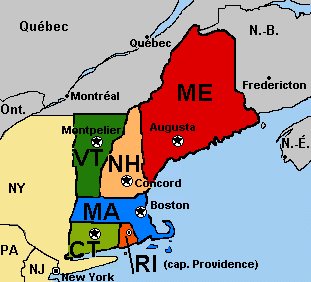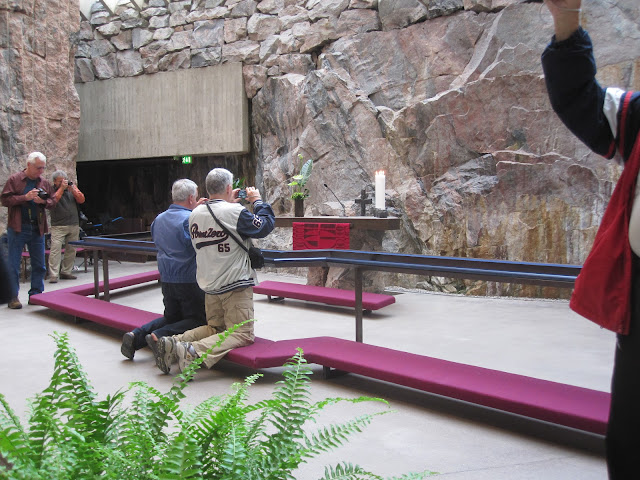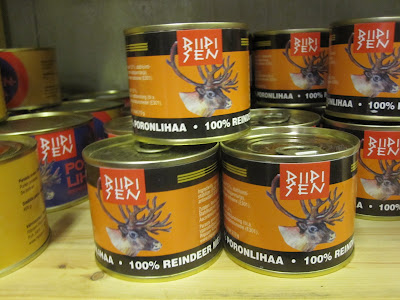Bob and I happened to have a free companion fare plane ticket good for anywhere in the continental United States, and we happened to have a few free hotel rooms coming through Hotels.com, and these two things happened to be coinciding with our 32nd wedding anniversary, so . . .
We flew to New England.
Bob is obsessed with crossing things off his list: Fourteeners to climb, foods to eat, countries to visit, and states in the United States to at least put his foot in. (He once drove to the Tennessee-Arkansas border after dropping Rachael and me off to tour Graceland just so he could say he'd been to Arkansas.) Neither Bob nor I had been anywhere in New England, so that's where we went. He could cross off three states AND a Canadian province in one blow!
We flew in to Manchester, New Hampshire. (Did you KNOW there was a Manchester, New Hampshire? I didn't.) Our first stop was Canterbury, a Shaker-town-turned-tourist-site about an hour north of Manchester.
Back in the mid-19th century, about 300 Shakers lived and worked here. There are no Shakers left in this particular community, but the site has been wonderfully preserved and we had a very knowledgeable, enthusiastic (non-Shaker) guide who obviously had great respect for this community.
The building below is the church, with one door for the women and one for the men. The Shakers believed in total celibacy, and they worshiped seated apart.
The Shakers had a wonderful outreach program for orphans, and when a new child arrived in the community, he or she was assigned to care for one of these trees, which gave the child both a responsibility and a sense of belonging:
The Shakers are known for their gardens and spices:
Behind the village are eight beautiful man-made ponds like this one:
The path leading from the village to the ponds:
Of course, we had to find some "native" food. I wouldn't recommend either one of these drinks:
We flew to New England.
Bob is obsessed with crossing things off his list: Fourteeners to climb, foods to eat, countries to visit, and states in the United States to at least put his foot in. (He once drove to the Tennessee-Arkansas border after dropping Rachael and me off to tour Graceland just so he could say he'd been to Arkansas.) Neither Bob nor I had been anywhere in New England, so that's where we went. He could cross off three states AND a Canadian province in one blow!
We flew in to Manchester, New Hampshire. (Did you KNOW there was a Manchester, New Hampshire? I didn't.) Our first stop was Canterbury, a Shaker-town-turned-tourist-site about an hour north of Manchester.
Back in the mid-19th century, about 300 Shakers lived and worked here. There are no Shakers left in this particular community, but the site has been wonderfully preserved and we had a very knowledgeable, enthusiastic (non-Shaker) guide who obviously had great respect for this community.
The Shakers had a wonderful outreach program for orphans, and when a new child arrived in the community, he or she was assigned to care for one of these trees, which gave the child both a responsibility and a sense of belonging:
Behind the village are eight beautiful man-made ponds like this one:
The path leading from the village to the ponds:
Of course, we had to find some "native" food. I wouldn't recommend either one of these drinks:
We also visited the New Hampshire state capital, Concord. With a population of about 42,000 (just a little more than half the size of the city I currently live in), it has to be the smallest state capital I have ever visited. It's amazing that it carries so much clout.
 We did find a lovely church across the street from the State Capitol, St. Paul's Episcopal Church. It was built in the 1800s, but gutted by an arsonist's fire in 1984. The Gothic interior was replaced with more modern decor:
We did find a lovely church across the street from the State Capitol, St. Paul's Episcopal Church. It was built in the 1800s, but gutted by an arsonist's fire in 1984. The Gothic interior was replaced with more modern decor:
Awesome lectern:
This painting and its window-like framing was my favorite thing about St. Paul's:
On our way north, we made a stop in Lebanon and scouted out the approximate site of the Smith family cabin in 1813, the year Joseph had his leg operated on. The property, which now boasts a gas station and convenience store, was next to this beautiful section of the Connecticut River:
 |
| See Bob's post here for much more detail on the site. |
Finally, we stopped in Hanover to take a quick look at Dartmouth College and check another one of the Ivies off another one of Bob's Lists. The smallest school in the Ivy League, it was charming and relatively peaceful the afternoon we were there:
More to come: Vermont, Montreal, and Maine.



















































